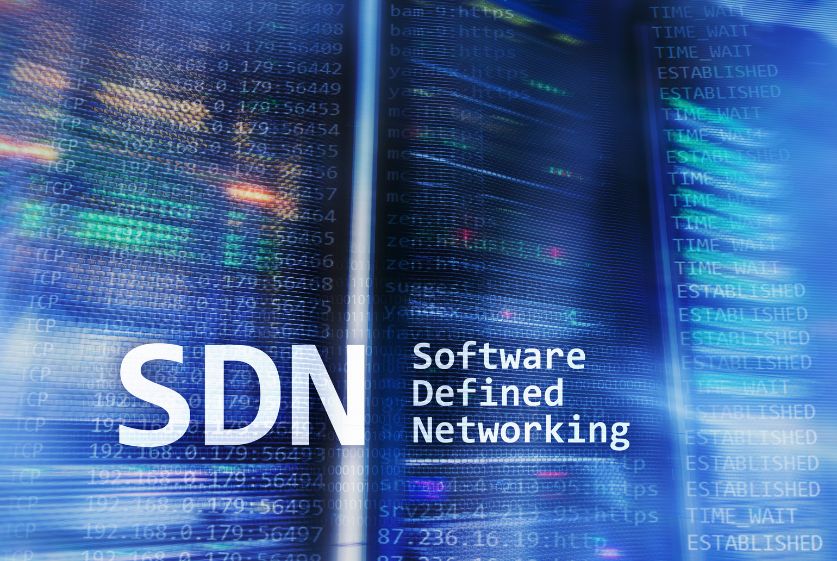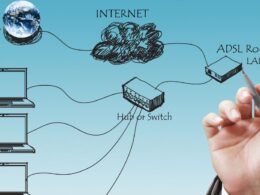Logical networking refers to creating abstracted network layers that are decoupled from the underlying physical infrastructure. Rather than having network connectivity directly tied to specific physical nodes, logical networks enable administrators to define virtual network topologies that can be configured and managed independently.
Table of Contents
Defining Logical Networks
A logical network utilizes software and virtualization technologies to create network abstractions separate from the physical network hardware. This allows network engineers to provision and manage virtual networks quickly without needing to make changes to the actual cabling and devices. The virtual networks operate as overlays on top of the physical architecture.
Key characteristics of logical networks include:
- Flexibility – networks can be spun up, changed, and scaled without physical changes
- Agility – configurations can be automated via software
- Abstraction – virtual networks are detached from physical components
Differences from Physical Networks
In contrast to physical networks consisting of actual hardware like routers, switches, and cables that move packets, logical networks utilize tunnels and encapsulations to create virtual network connectivity that operates independently of the underlying infrastructure.
Logical networks introduce a separation between the physical transport network and the virtual overlay network – decoupling infrastructure from services. This enables greater flexibility and agility in configuring connectivity.
Virtualization and Abstraction
Logical networking relies heavily on virtualization technologies like hypervisors, containers, virtual switches, and virtual network functions. These building blocks allow the creation of virtualized network services and overlays.
Tunneling protocols like VXLAN encapsulate traffic and enable virtual networks to be created that span physical network segments. This provides complete abstraction from the physical network topology.
Benefits of Logical Networking
Adopting a logical networking approach delivers significant advantages:

Improved Agility and Flexibility
Logical networks allow new network segments and topologies to be easily created, changed, and torn down in minutes through software. This is a massive improvement over physical networks that require cumbersome manual reconfiguring of equipment.
Cost Savings
Virtualizing networks and moving them to software significantly reduces hardware requirements. Large numbers of physical routers and switches are no longer necessary. Operational expenditures are also decreased.
Enhanced Security
Abstraction from the physical infrastructure means logical networks can keep critical systems separated from one another even when they operate on the same physical equipment. Micro-segmentation provides containment of threats.
Types of Logical Networks
Several predominant technologies provide virtual networking and abstraction capabilities:

VLANs
VLANs (Virtual Local Area Networks) segment physical switches into distinct broadcast domains, allowing logical groupings of systems independent of location. VLANs rely on tagging and trucking for inter-VLAN routing via physical routers.
VXLAN
VXLAN (Virtual Extensible LAN) is an overlay scheme operating over layer 3 physical networks. It utilizes MAC-in-UDP encapsulation and tunneling to stretch layer 2 logical networks across the underlying infrastructure.
NVGRE
NVGRE (Network Virtualization using Generic Routing Encapsulation) also encapsulates layer 2 traffic over layer 3 networks, using Generic Routing Encapsulation (GRE) tunnels to connect dispersed logical network segments.
Implementing Logical Networks
To deploy logical networks, organizations need expertise with virtualization platforms and overlay protocols like VXLAN. Robust network management capabilities are also critical to handle large implementations.
Network automation and infrastructure-as-code techniques allow even complex logical network designs to be rolled out quickly and consistently. Monitoring and troubleshooting also require updated tools and practices.
SDN and Network Virtualization
SDN (software-defined networking) takes abstraction even further by decoupling network management from the physical hardware. Centralized SDN controllers dynamically program logical network behavior into simplified network devices.

When combined with network functions virtualization (NFV), SDN can radically transform static physical networks into agile logical infrastructures through programmability and automation.
The Future of Logical Networking
Logical networking represents a massive shift in how networks are designed, deployed, and managed. The decoupling of logical networks from physical constraints via abstraction layers yields unmatched levels of flexibility, agility, and cost efficiency.
As virtualization and SDN continue rapidly evolving, logical networks will become the new norm – bringing massively scalable, resilient, and adjustable connectivity to organizations. Physical networks will primarily serve as basic conduits rather than complex interconnections.
This bright future makes embracing logical networking a strategic imperative for enterprise IT leaders.
Conclusion
Logical networking utilizes abstraction and virtualization to liberate networks from rigid physical architectures. Implementing flexible, agile overlay networks provides superior business agility while massively reducing infrastructure and operations costs. SDN control further optimizes workflows and reliability. Logical networking marks the future for enterprise connectivity along with limitless potential.
FAQs
What is logical networking?
Logical networking involves creating virtual network overlays that are decoupled from the underlying physical network hardware, providing greater flexibility and agility.
What technologies enable logical networking?
Key enablers are virtualization platforms like hypervisors and containers, tunneling protocols such as VXLAN, and centralized control planes provided by SDN controllers.
How is a logical network different than a VLAN?
VLANs segment physical switches and rely on trucking between devices. Logical networks typically utilize overlay encapsulation technologies to create virtual networks over layer 3 physical networks.
What problems does logical networking seek to solve?
It aims to address the lack of agility, inefficient resource utilization, and operational complexity inherent in rigid physical network architectures dependent on embedded policies.
Will logical networking replace traditional physical networks?
It will become the predominant paradigm, but physical networks will continue serving as the foundational transport infrastructure supporting overlay logical networks.









